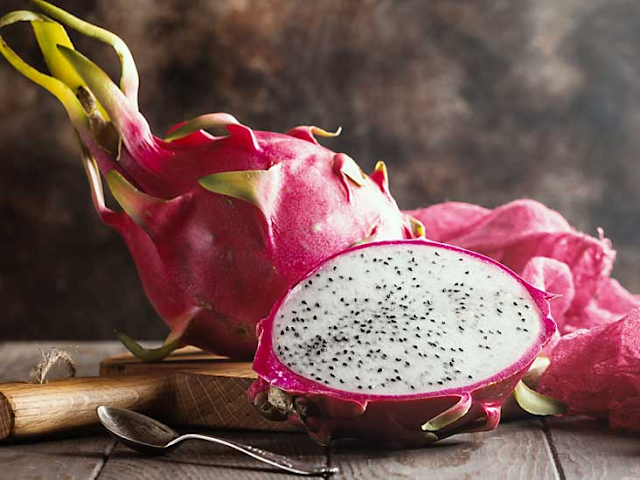10 Exotic & Unique Fruits Around the World
10 Exotic & Unique Fruits Around the World
Introduction
When it comes to fruits, most of us are familiar with the usual suspects like apples, bananas, and oranges. However, the world is a diverse and fascinating place, and this diversity extends to the realm of fruits as well. In this article, we'll take a tantalizing journey through the globe to discover 10 exotic and unique fruits that you probably haven't encountered in your local supermarket. From bizarre shapes to unusual flavors, these fruits are sure to pique your curiosity and taste buds.
1. Dragon Fruit (Pitaya)
H1: A Vibrant Tropical Delight
Dragon fruit, also known as pitaya, is a stunningly vibrant fruit that hails from South America. Its bright pink or yellow skin contrasts beautifully with the white or red flesh speckled with tiny black seeds. This fruit is not only visually appealing but also offers a subtly sweet taste reminiscent of a cross between a pear and a kiwi.
2. Rambutan
H1: Furry and Flavorful
Hailing from Southeast Asia, the rambutan is a peculiar-looking fruit with a hairy exterior that hides a sweet and juicy surprise within. Its taste can be likened to lychee, making it a favorite in tropical desserts and fruit salads.
3. Mangosteen
H1: The Queen of Fruits
Known as the "queen of fruits" in Southeast Asia, the mangosteen boasts a delectable, sweet-and-tangy flavor. Its thick purple rind protects a juicy, snow-white flesh that is often described as a heavenly blend of strawberries and citrus.
4. Durian
H1: The King of Fruits (with a Controversy)
Durian, often crowned as the "king of fruits," is infamous for its pungent odor that people either love or loathe. Beneath the divisive smell, you'll find a rich, custard-like flesh with a taste that's a mix of almonds, caramel, and hints of garlic.
5. Jabuticaba
H1: Fruits on the Trunk
Native to Brazil, the jabuticaba tree produces fruit directly on its trunk, which is a unique feature in the world of fruit-bearing plants. These tiny, grape-like fruits are sweet and tart, often used to make jellies and wines.
6. Buddha's Hand
H1: Fragrance and Fingers
Buddha's hand is a bizarre citrus fruit that looks like a cluster of elongated fingers reaching skyward. Known for its strong lemon fragrance, it is used in Asian cuisine and as a natural air freshener.
7. Chayote
H1: The Edible Pear
Chayote, also called vegetable pear, is a green, wrinkled fruit that resembles a pear in shape. It has a mild, crisp texture and is a versatile ingredient in salads, stir-fries, and soups.
8. Salak (Snake Fruit)
H1: Scaly and Sweet
Native to Indonesia, the salak, or snake fruit, gets its name from its reddish-brown scaly skin. Inside, you'll find a sweet and tangy flesh that is reminiscent of apples and strawberries.
9. Ackee
H1: Jamaica's Gem
Ackee is the national fruit of Jamaica and is a crucial ingredient in the country's famous dish, ackee and saltfish. Its creamy texture and slightly nutty flavor make it a unique addition to Caribbean cuisine.
10. Chempedak
H1: Jackfruit's Lesser-Known Cousin
Chempedak, often overshadowed by its larger cousin, the jackfruit, is popular in Southeast Asia. It features a sweeter taste than jackfruit and is often deep-fried to create a crispy snack.
Conclusion
Exploring the world of exotic fruits is not only a culinary adventure but also a journey through the rich tapestry of global biodiversity. These 10 fruits offer a glimpse into the fascinating flavors and forms that nature has to offer. Next time you have the opportunity, don't hesitate to try one of these exotic delicacies and expand your palate.
FAQs
1. Are these exotic fruits readily available in supermarkets?
While some exotic fruits like dragon fruit and rambutan are becoming more common in supermarkets, others may still be challenging to find in certain regions. You might have better luck at specialty stores or international markets.
2. What is the best way to enjoy durian without being put off by its smell?
The best way to enjoy durian is to embrace its unique aroma and savor its rich, creamy flesh. Many enthusiasts find that the taste more than compensates for the smell.
3. Can I grow these exotic fruits at home?
Some of these fruits, like dragon fruit and chayote, can be grown at home if you have the right climate and conditions. Others, like mangosteen and jabuticaba, may be more challenging to cultivate outside their native regions.
4. Are there any health benefits associated with these exotic fruits?
Yes, many exotic fruits are rich in vitamins, antioxidants, and fiber. They can contribute to a healthy diet and provide unique flavors and textures to your meals.
5. Where can I find more recipes and information about these exotic fruits?
You can explore various cooking websites, food blogs, and books dedicated to exotic fruits for recipes and in-depth information. Additionally, local culinary experts in regions where these fruits are common can provide valuable insights.













Comments
Post a Comment